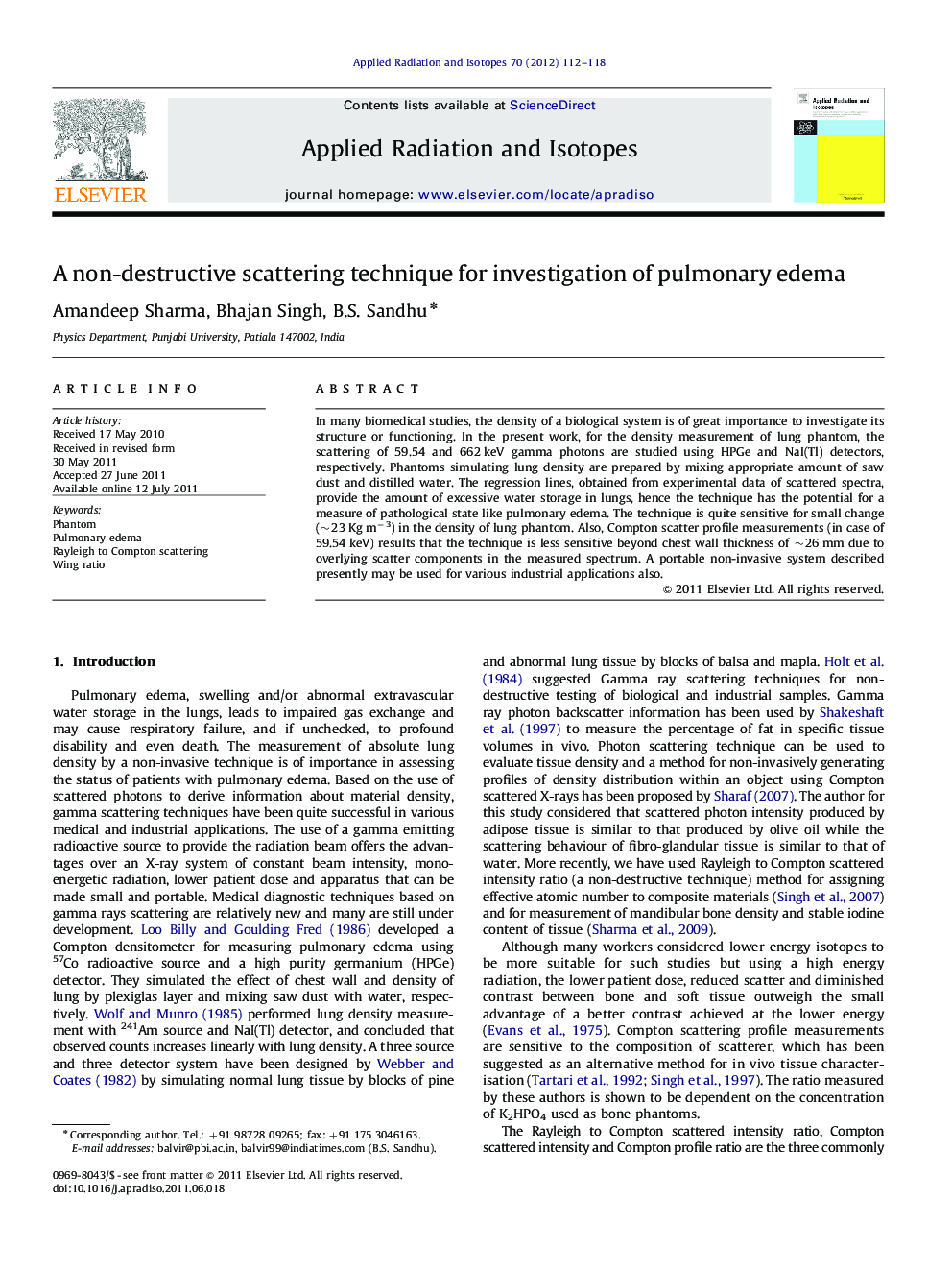| Article ID | Journal | Published Year | Pages | File Type |
|---|---|---|---|---|
| 1879141 | Applied Radiation and Isotopes | 2012 | 7 Pages |
In many biomedical studies, the density of a biological system is of great importance to investigate its structure or functioning. In the present work, for the density measurement of lung phantom, the scattering of 59.54 and 662 keV gamma photons are studied using HPGe and NaI(Tl) detectors, respectively. Phantoms simulating lung density are prepared by mixing appropriate amount of saw dust and distilled water. The regression lines, obtained from experimental data of scattered spectra, provide the amount of excessive water storage in lungs, hence the technique has the potential for a measure of pathological state like pulmonary edema. The technique is quite sensitive for small change (∼23 Kg m−3) in the density of lung phantom. Also, Compton scatter profile measurements (in case of 59.54 keV) results that the technique is less sensitive beyond chest wall thickness of ∼26 mm due to overlying scatter components in the measured spectrum. A portable non-invasive system described presently may be used for various industrial applications also.
► Measurements specify the pathological state like pulmonary edema. ► Rayleigh to Compton ratio, Wing ratio and Compton profile authenticate the results. ► The radiation dose available to chest will be lesser in comparison to chest X-ray. ► Portable system can be used for density measurements in industrial applications.
